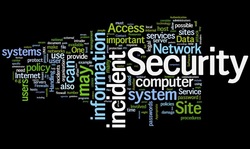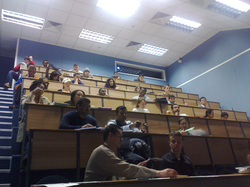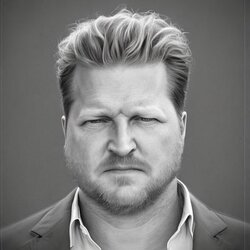 Voters pick the Top 100 over at Guitar World. Unfortunately, they missed a few heavy hitters! Jerry Reed, Tommy Emmanuel, and Roy Clark are nowhere to be found. Any "great guitarist" list should include these three. In fact, Tommy is a legend and through mentoring, Chet A admired the young Australian's style. The Top 100 Results 1. Edward Van Halen - Van Halen 2. Brian May - Queen 3. Alex Lifeson - Rush 4. Jimi Hendrix 5. Joe Satriani 6. Jimmy Page - Led Zeppelin 7. Tony Iommi - Black Sabbath 8. Stevie Ray Vaughn 9. Dimebag Darrell - Pantera 10. Steve Vai 11. Randy Rhoads - Ozzy Osbourne/Quiet Riot 12. Dave Mustaine - Megadeth 13. David Gilmour - Pink Floyd 14. Les Paul 15. Duane Allman 16. Robert Johnson 17. John Petrucci - Dream Theater 18. Zakk Wylde - Ozzy Osbourne 19. James Hetfield - Metallica 20. Ritchie Blackmore - Rainbow/Deep Purple 21. Angus Young - AC/DC 22. Slash - Guns N Roses 23. Paul Gilbert - Mr. Big/Racer X 24. Buddy Guy 25. George Harrison - The Beatles 26. Vernon Reid - Living Color 27. Frank Zappa 28. Eric Clapton 29. Billy Gibbons - ZZ Top 30. Chet Atkins 31. Dickey Betts - Allman Brothers 32. Django Reinhardt 33. Mark Morton - Mastodon 34. Mark Tremonti - Creed 35. Warren Haynes - Allman Brothers 36. Kirk Hammett - Metallica 37. Jerry Cantrell - Alice In Chains 38. Buckethead 39. Jeff Beck 40. Keith Richards - The Rolling Stones 41. Michael Schenker 42. Carlos Santana 43. Yngwie Malmsteen 44. Chuck Berry 45. John Frusciante - Red Hot Chili Peppers 46. Jason Becker - David Lee Roth/Solo 47. Eric Johnson 48. Joe Bonamassa - Black Country Communion 49. Alexi Laiho 50. Dave Murray - Iron Maiden 51. Allan Holdsworth 52. Joe Walsh - The Eagles 53. Rick Nielsen - Cheap Trick 54. Jerry Garcia - Grateful Dead 55. B.B. King 56. Lindsey Buckingham - Fleetwood Mac 57. Tom Morello - Rage Against The Machine 58. Steve Lukather - Toto 59. Son House 60. John Lee Hooker 61. Steve Howe - Asia/Yes 62. Chuck Schuldiner - Death 63. John McLaughlin 64. Albert Lee 65. Pete Townshend - The Who 66. Alex Skolnick - Testament 67. Johnny Winter 68. George Lynch - Dokken/Lynch Mob 69. Kerry King - Slayer 70. Michael Angelo Batio 71. Jeff Loomis - Nevermore 72. Steve Morse - Deep Purple/ Dixie Dreggs 73. Rory Gallagher 74. Ted Nugent 75. Joe Perry - Aerosmith 76. Al Di Meola 77. Andy Summers - The Police 78. Chris Broderick - Megadeth 79. Gary Moore 80. KK Downing - Judas Priest 81. Nuno Bettencourt - Extreme 82. Ropert Fripp - King Crimson 83. Glenn Tipton - Judas Priest 84. Malcolm Young - AC/DC 85. Jeff Hanneman - Slayer 86. Peter Frampton 87. Synyster Gates - Aveneged Sevenfold 88. Neil Young 89. Kenny Wayne Shepherd 90. Robin Trower 91. T-Bone Walker 92. Ace Frehley 93. Gary Rossington - Lynyrd Skynryd 94. Albert King 95. Jack White - White Stripes 96. Mark Knopfler - Dire Straits 97. Tosin Abasi - Animals As Leaders 98. Derek Trucks - Allman Brothers 99. John 5 100. Wes Montgomery
1 Comment
 October is National Cyber Security Awareness Month! National Cyber Security Awareness Month is observed in October to drive awareness about our role in reducing cyber threat and staying secure. Today, organizations are more dependent than ever on the vast worldwide network of computers, data, and websites that support internal and external transactions, communications, and more. Increased connectivity can bring about greater risk of theft, fraud, and abuse. It is important that organizations ensure their information and infrastructure are secure, reliable, and resilient. What's Popular Complete Guide to Security and Privacy Metrics: Measuring Regulatory Compliance, Operational Resilience, and ROI Defining 900+ ready to use metrics that measure compliance, resiliency, and ROI, this book addresses measuring compliance with current legislation, regulations, and standards in the US, EC, and Canada including SOX, HIPAA, and the Data Protection Act-UK. Defense against the Black Arts: How Hackers Do What They Do and How to Protect against It Offering an insider's view of the secrets of hackers, this hands-on guide exposes methodologies hackers use to exploit physical access, network access, and wireless vectors, and shows you how you can outwit computer predators at their own game. Gray Hat Hacking: The Ethical Hacker's Handbook, Third Edition Detailing the most recent vulnerabilities and remedies along with legal disclosure methods, this book explains how to thwart malicious network intrusion by using cutting-edge techniques for finding and fixing security flaws. Cybercrime and Espionage: An Analysis of Subversive Multivector Threats Providing a wealth of knowledge related to the realities seen in the execution of advanced attacks, this book will educate you on realities of advanced, next generation threats, which take form in a variety ways. Cyber Security Essentials Illustrating more than 75 key security concepts with short, easy-to-understand descriptions, this book explains the concepts behind today's most prevalent threats, tactics, and procedures and provides actionable advice for the mitigation of common vulnerabilities. What's New The Security Risk Assessment Handbook: A Complete Guide for Performing Security Risk Assessments, Second Edition Walking you through the process of conducting an effective security assessment, this authoritative guide provides the tools and up-to-date understanding you need to select the security measures best suited to your organization. Reverse Deception: Organized Cyber Threat Counter-Exploitation Providing full coverage of legal and ethical issues, operational vetting, and security team management, this one-of-a-kind guide shows how to assess your network's vulnerabilities, zero in on targets, and effectively block intruders. Predicting Malicious Behavior: Tools and Techniques for Ensuring Global Security A groundbreaking exploration of how to identify and fight security threats at every level, this revolutionary book combines real-world security scenarios with actual tools to predict and prevent incidents of terrorism, network hacking, individual criminal behavior, and more. Security Automation Essentials: Streamlined Enterprise Security Management & Monitoring with SCAP Providing detailed case studies and tips on selecting appropriate security components, this authoritative guide lays out comprehensive technical, administrative, and operational strategies for security management. Cybersecurity for Industrial Control Systems: SCADA, DCS, PLC, HMI, and SIS Explaining how to develop and implement an effective cybersecurity program for ICS, this book provides you with the tools to ensure network security without sacrificing the efficiency and functionality of ICS. Handbook on Securing Cyber-Physical Critical Infrastructure: Foundations and Challenges Loaded with examples of real-world problems and solutions, this book introduces the theoretical foundations and techniques for securing critical cyber and physical infrastructures as well as their underlying computing and communication architectures and systems.  The founder of the Khan Academy asks, "what if we were to separate the teaching and credentialing roles of universities?" He continues the idea to say there would be "rigorous, internationally recognized assessments that measured your understanding in proficiency in various fields." Those exist today. Consider the technical, information systems, computer science field. A quick search reveals no less than 130+ tool or technology specific certifications for IT professionals. These range from operating systems to cyber security to application specific credentials. There are many more by profession including human resources, systems engineering, systems architecture, and program manager disciplines. The Professional Engineer credential is another distinguished certification. Students ask about Credentials As a professor, I often get asked which credentials are best to get and I always respond with the undergraduate or graduate degree. These teach us the discipline, the process, the knowledge, and often technique to approach problem solving. The lessons learned in undergraduate (and graduate) programs have "staying" power - they stay with students long after the degree has been completed and credential received. Industry or Tool Specific Certifications One of the issues I see with these assessments is they are specific to a tool or a version of a tool. To demonstrate mastery of a specific tool, these credentials may be considered worthy, but would not replace an education. Perhaps we have heard the term "paper MCSE", those individuals who have the credential, but are ineffective at their positions. This post from 2005 is an example where the individual passed the exams, but observed "the only problem was that I didn't know squat." Another problem is the tools change through subsequent releases, feature upgrades, mergers, and acquisitions. If one mastered an operating system in 2001, the platform has undoubtedly changed 11 years later. Complimentary Certifications and Traditional Education There are high schools that teach traditional curriculum as well as IT certifications such as the Cisco CCNA and/or CISSP. Some higher education institutions include courses or modules that prepare students for certification exams. Industry certifications can be used to bolster a career or improve technical skills and practitioner skills after a university degree program is completed. To answer the first question, I'm not sure why one would separate teaching and credentialing. I have not even addressed the complexities of exam bias and bias on the international scale. Will post more on this later including the important social aspect of learning and education. /jd  Larry Ellison, CEO of Oracle just announced that Oracle was launching a brand new cloud computing service. Think for a minute how profound this is given Ellison's resistance to cloud computing since 2008. In 2008, Ellison had some sharp words about the subject: "The interesting thing about cloud computing is that we've redefined cloud computing to include everything that we already do. I can't think of anything that isn't cloud computing with all of these announcements. The computer industry is the only industry that is more fashion-driven than women's fashion. Maybe I'm an idiot, but I have no idea what anyone is talking about. What is it? It's complete gibberish. It's insane. When is this idiocy going to stop?" In contrast, Vivek Kundra, CIO of the U.S. Federal Government was an advocate of cloud computing, “I believe it's the future," he says. "It's moving technology leaders away from just owning assets, deploying assets and maintaining assets to fundamentally changing the way services are delivered“ (CIO, 2008). The excerpts above were from my ACM and ISE Security award nominated dissertation research posted here: http://scholars.indstate.edu/handle/10484/2031 |
AuthorDirector Archives
January 2023
Categories
All
|
Photos from europeanspaceagency, ▓▒░ TORLEY ░▒▓, Lori_NY, Dean_Groom, dalecruse, Fin Cosplay & Amigurumi, Iain Farrell, erin_everlasting, palindrome6996, Easa Shamih (eEko) | P.h.o.t.o.g.r.a.p.h.y, markhillary, Matt McGee, Marc_Smith, woodleywonderworks, agustilopez, rachel_titiriga, SeaDave, cheri lucas., Caio H. Nunes, grabbingsand, Armchair Aviator, quinn.anya, Jennifer Kumar, billaday, edtechworkshop, chucknado, purpleslog, yugenro, christianeager, dground, GlasgowAmateur, expertinfantry, shixart1985 (CC BY 2.0), OiMax, Wilfried Martens Centre for European Studies, PEO, Assembled Chemical Weapons Alternatives, IBM Research, shixart1985, markus119, shixart1985, shixart1985, Wilfried Martens Centre for European Studies


 RSS Feed
RSS Feed
